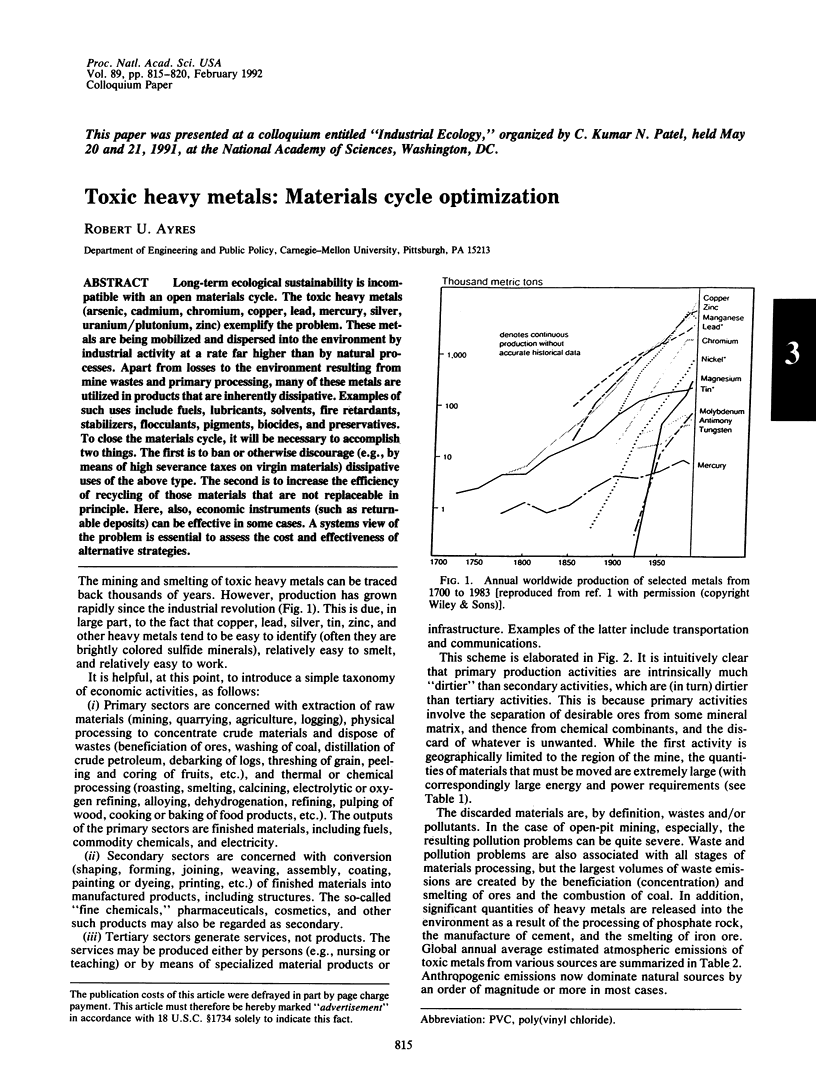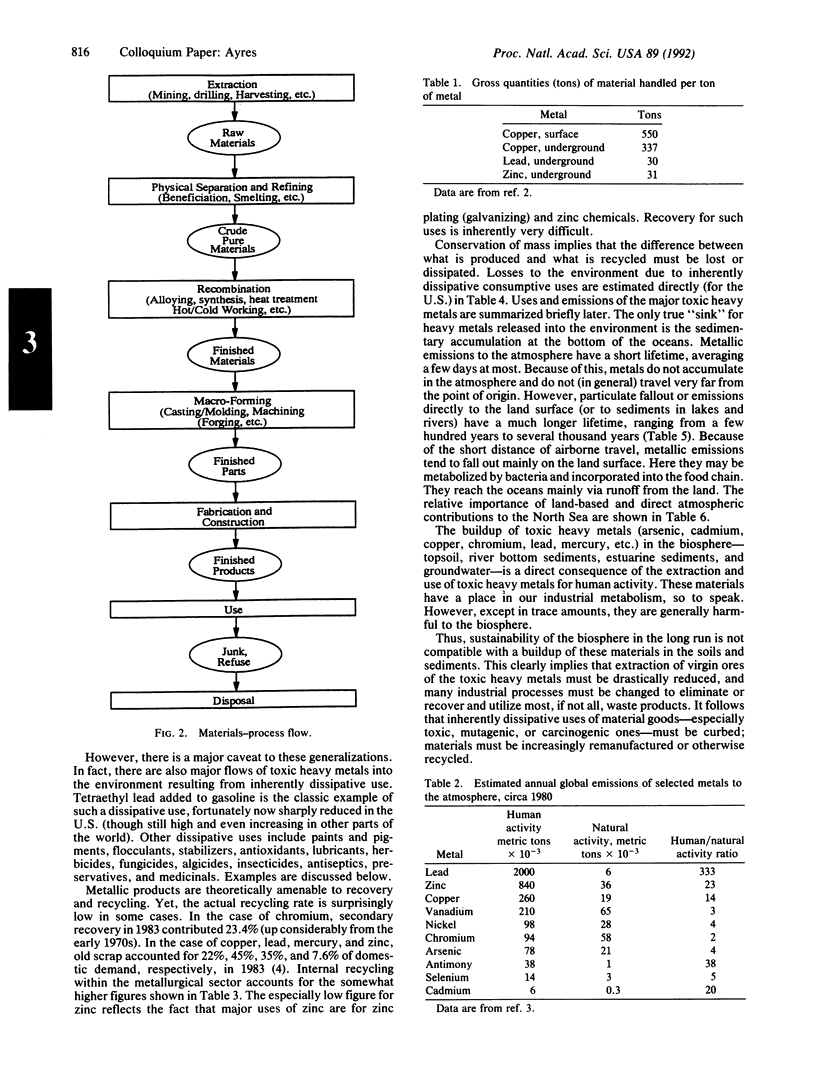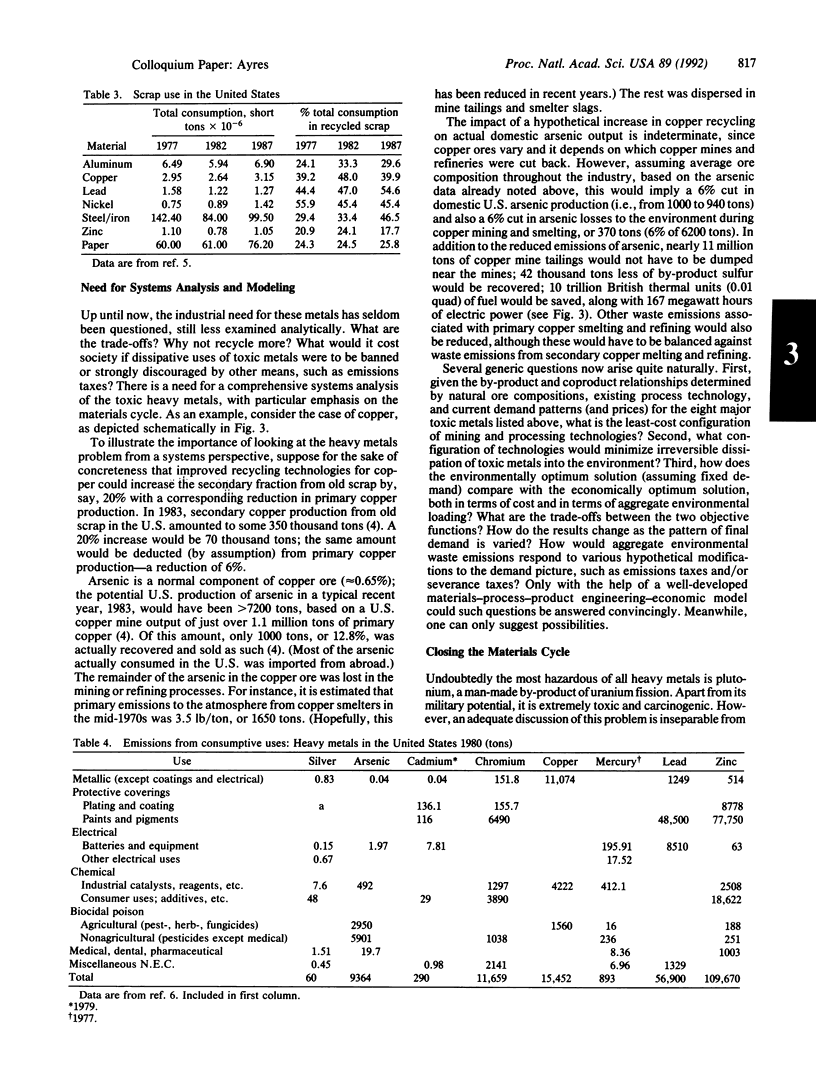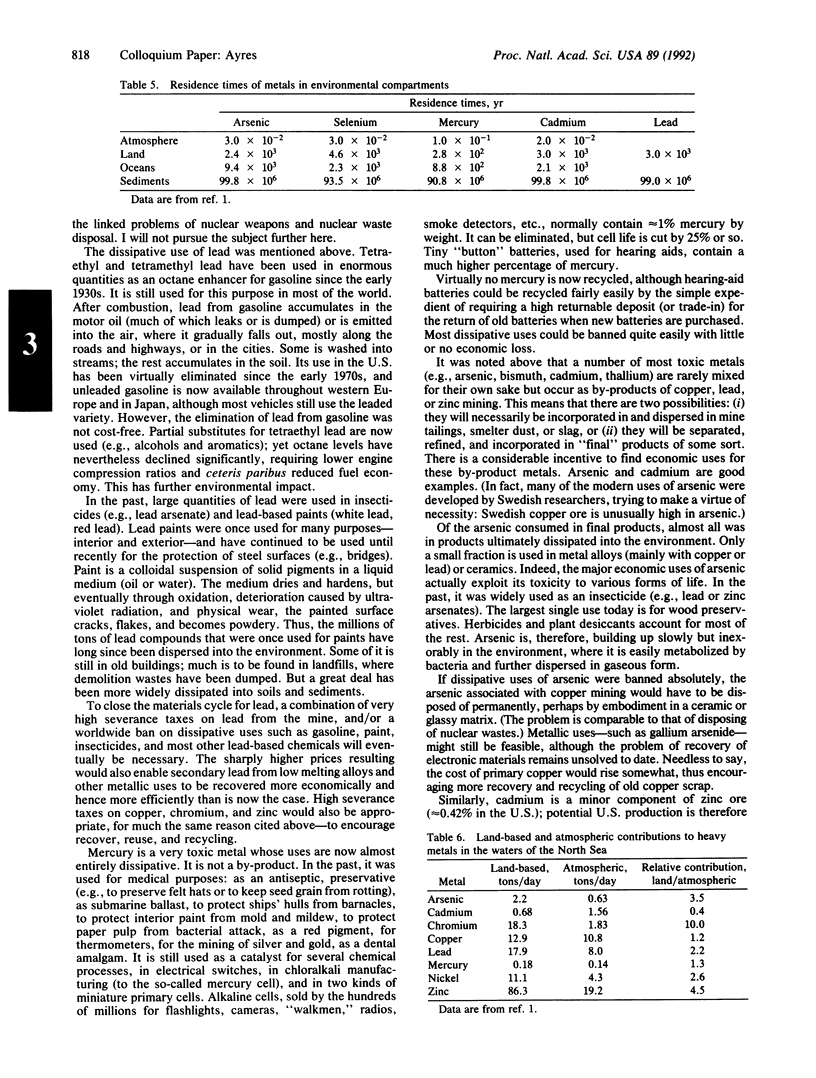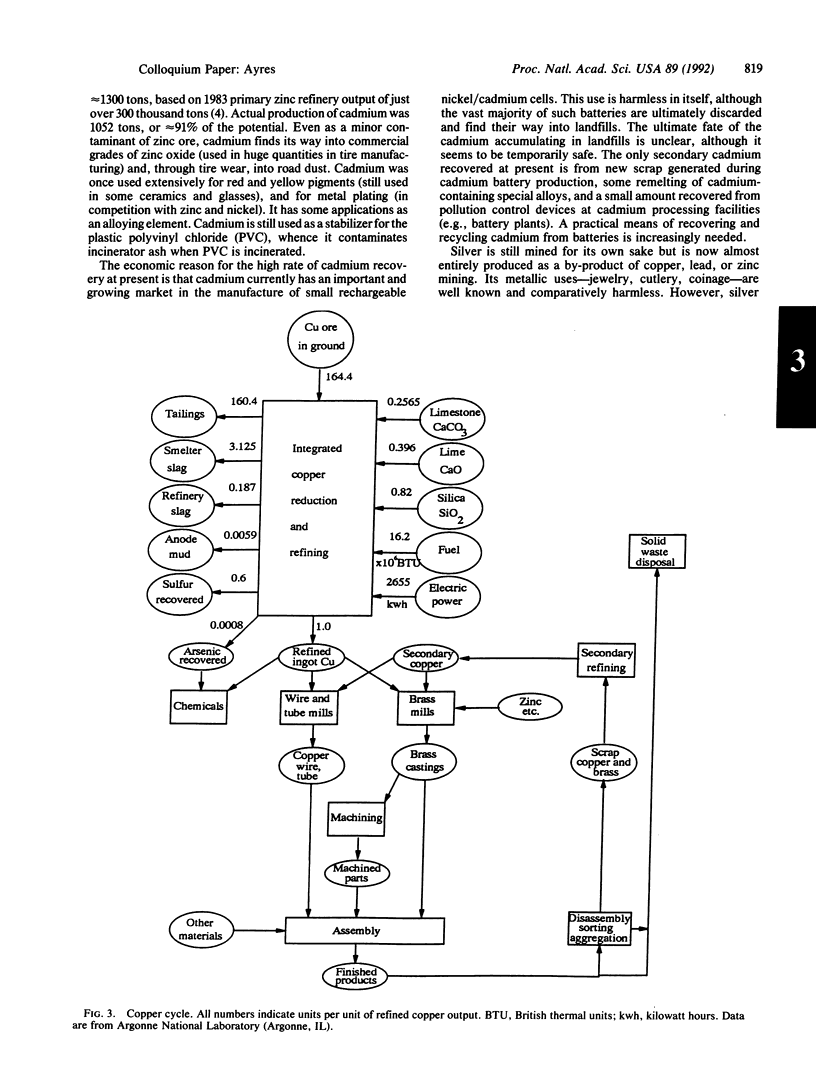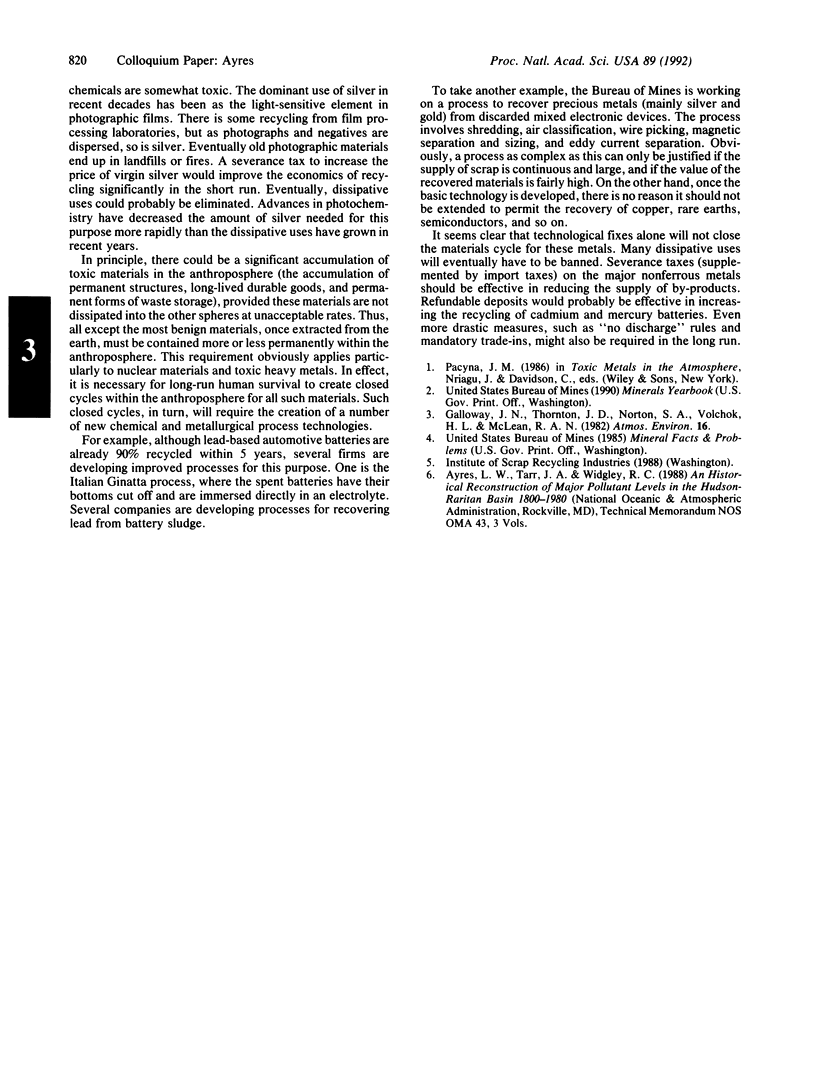Abstract
Long-term ecological sustainability is incompatible with an open materials cycle. The toxic heavy metals (arsenic, cadmium, chromium, copper, lead, mercury, silver, uranium/plutonium, zinc) exemplify the problem. These metals are being mobilized and dispersed into the environment by industrial activity at a rate far higher than by natural processes. Apart from losses to the environment resulting from mine wastes and primary processing, many of these metals are utilized in products that are inherently dissipative. Examples of such uses include fuels, lubricants, solvents, fire retardants, stabilizers, flocculants, pigments, biocides, and preservatives. To close the materials cycle, it will be necessary to accomplish two things. The first is to ban or otherwise discourage (e.g., by means of high severance taxes on virgin materials) dissipative uses of the above type. The second is to increase the efficiency of recycling of those materials that are not replaceable in principle. Here, also, economic instruments (such as returnable deposits) can be effective in some cases. A systems view of the problem is essential to assess the cost and effectiveness of alternative strategies.
Full text
PDF